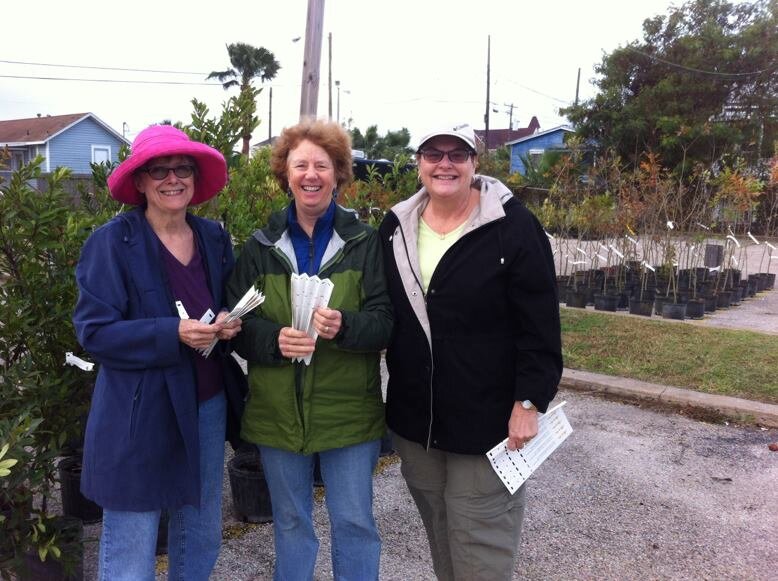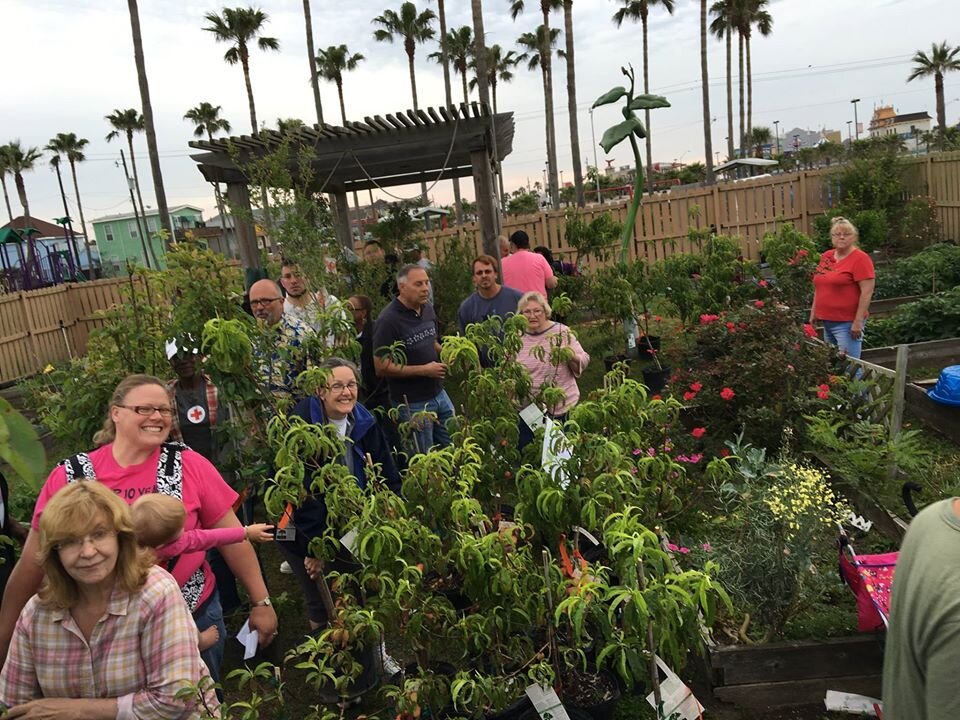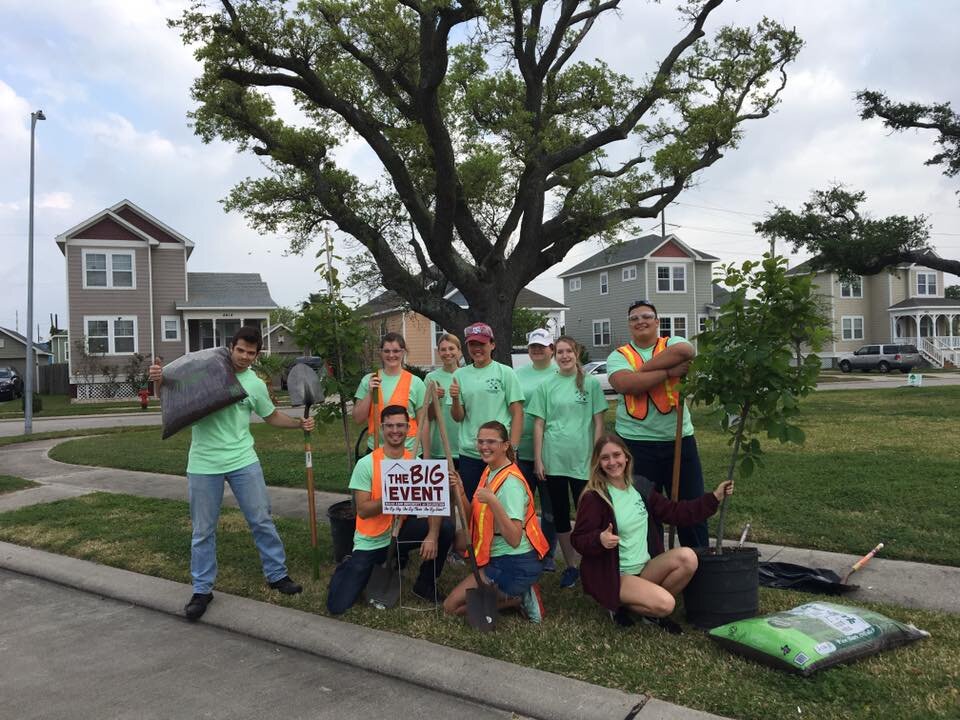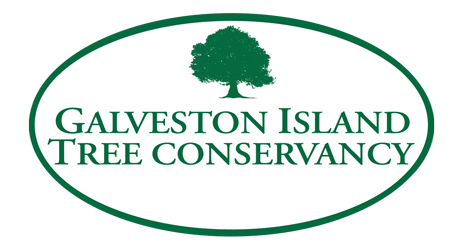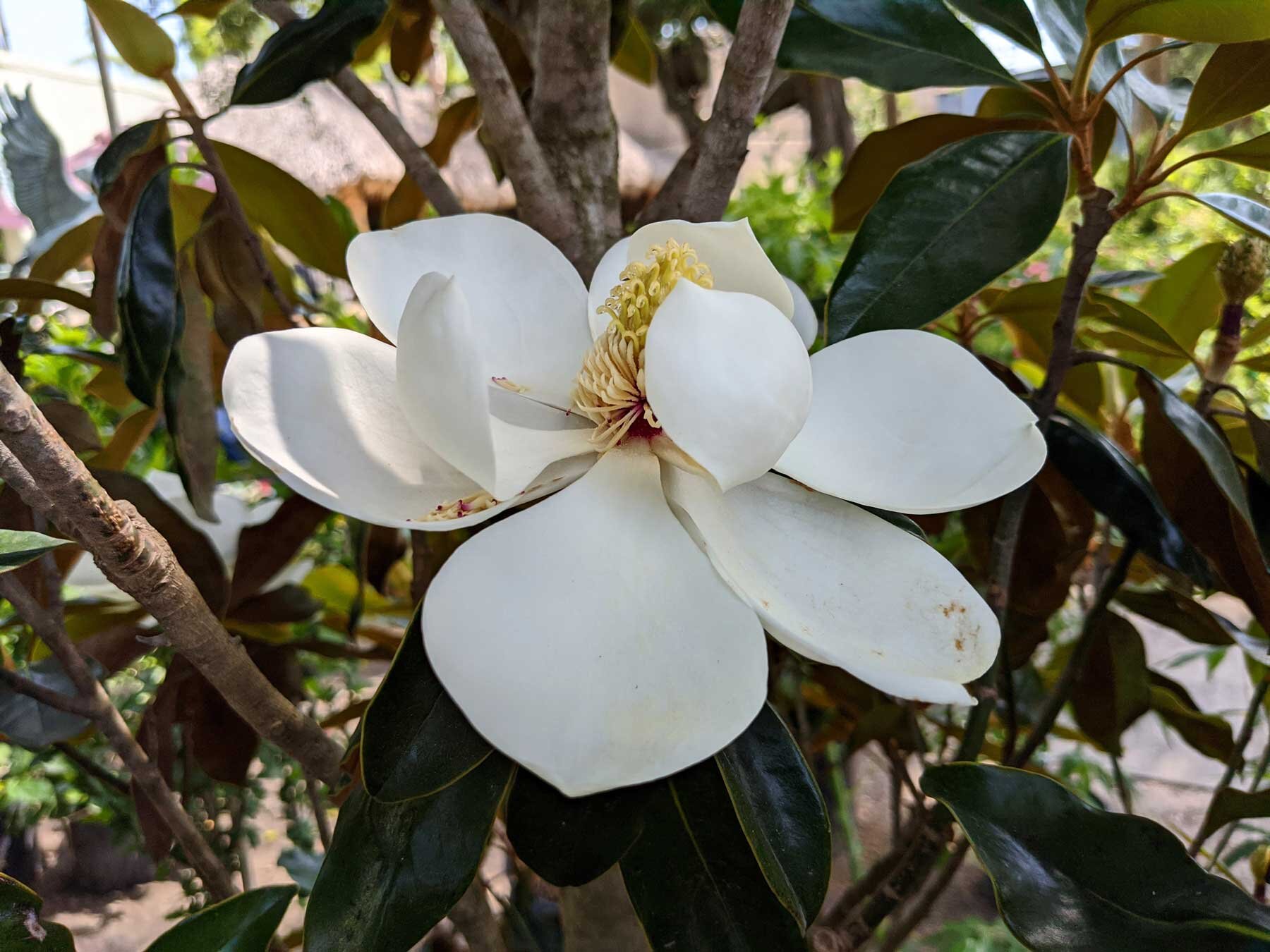
Trees are a unique “technology” because they produce many benefits at the same time.
About Galveston Island Tree Conservancy (GITC)
Galveston has a rich history and diverse population — of both people and trees. Our vision and challenge is to make lasting connections between Galvestonians and their trees on our streets, in neighborhoods and public spaces.
Our Origin Story
In 2008, Hurricane Ike’s storm surge flooded much of Galveston and destroyed 80 percent of the island’s tree canopy. Over 40,000 trees, many planted in the aftermath of the Great Storm of 1900, were destroyed.
The storm created a stark landscape that greatly reduced the morale of our citizens. It also denied residents of the infrastructural benefits that urban forests provide reduced storm runoff, cleaner air, improved water quality, shade, and lower energy consumption.
One senior US official described it as the worst loss of urban tree canopy in the nation’s history.
Mission
Our goal is to make lasting connections between Galvestonians and their trees and to establish new sustainable planting programs.
Vision
Restore a shady tree canopy to Galveston’s streets, neighborhoods and public spaces.
Goal
Plant 25,000 trees over five years on private and public property.
Our strategic plan and project priorities were established in accordance with the following principles:
Volunteer Participation
Projects are more likely to succeed when citizens take an active role—during plan development and on the day of planting. Tree planting and care are the only “public works” activities where citizens can be actively involved.
Public Input
Projects conducted on public property require public input through a formal process.
Adjacent Homeowner Choice
As the ultimate success of residential street tree plantings is directly related to the maintenance performed by individual homeowners, the choice to either “opt-in” or “opt-out” of planting projects will be an important component of street tree plantings.
Land Ethic
As stewards of the barrier island on which we live, we remain mindful of wasting precious water resources and will resist introducing plant species that can invade and degrade natural environments.
Project Diversity
While focused on creating new shade, the plan will deliver tree planting projects that include a healthy diversity of species, tree sizes, and funding methods.
Hurricane Resistance
Galveston remains susceptible to major storms so tree planting and maintenance programs will attempt to build a storm-resistant population of trees.
Education
We believe that citizens who understand how trees grow and thrive will ensure the trees we plant develop into the community shade we seek to create.
Proportionality
Neighborhoods suffering the greatest tree loss should receive priority as new tree planting projects and programs are developed.
Equal Opportunity
The premise that new shade is planned for and accessible to residents of all neighborhoods and socio-economic levels.
